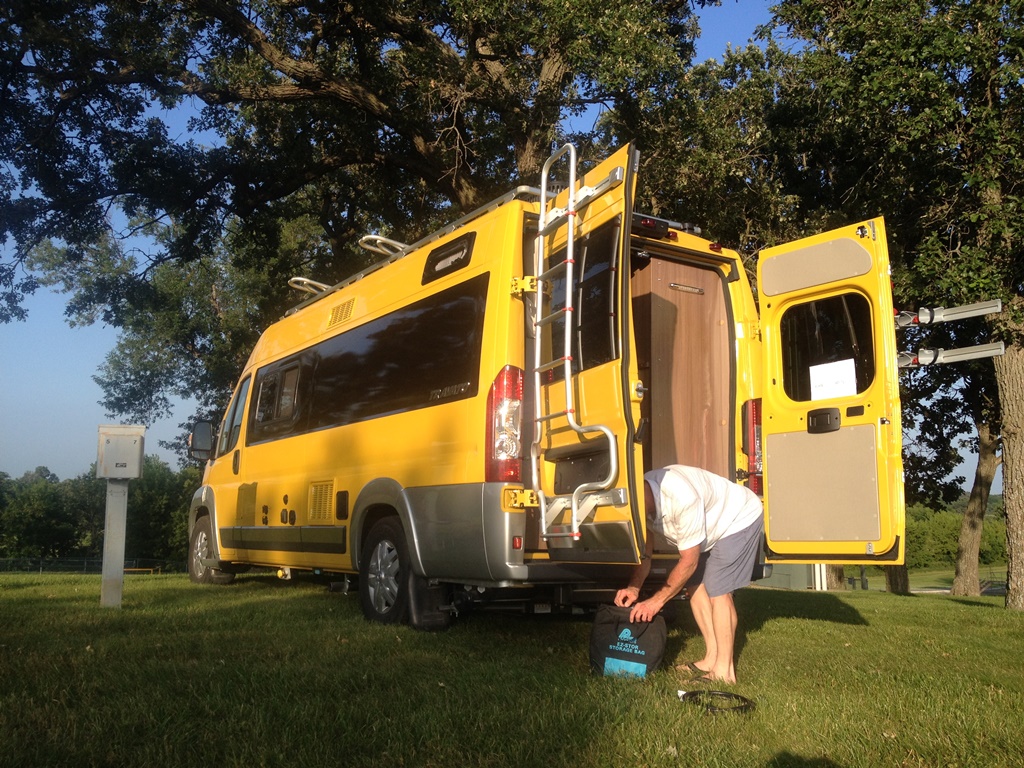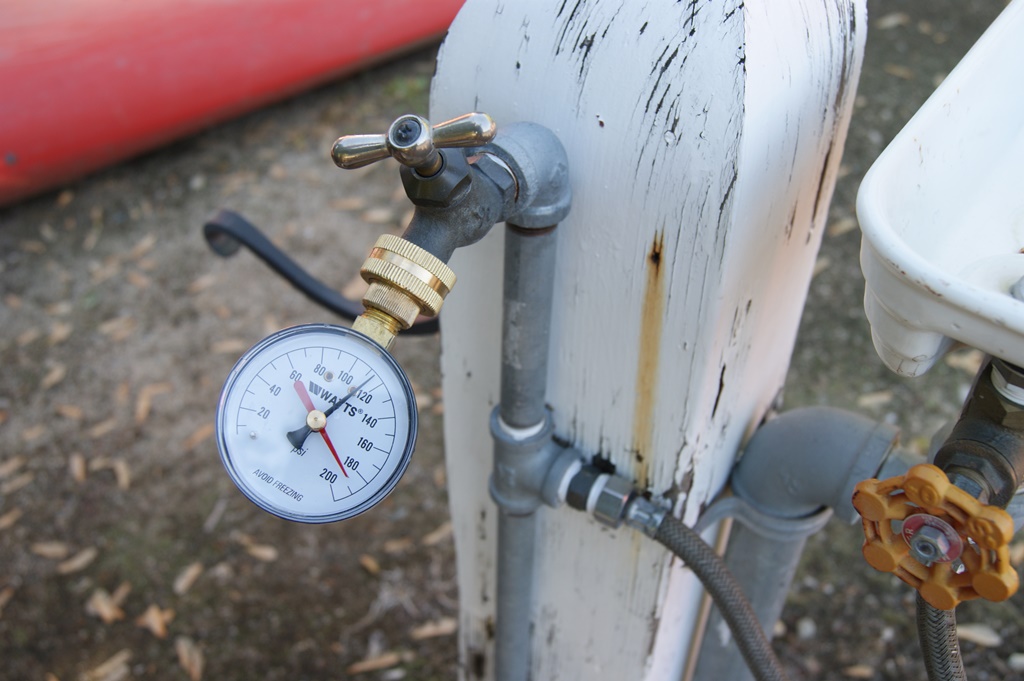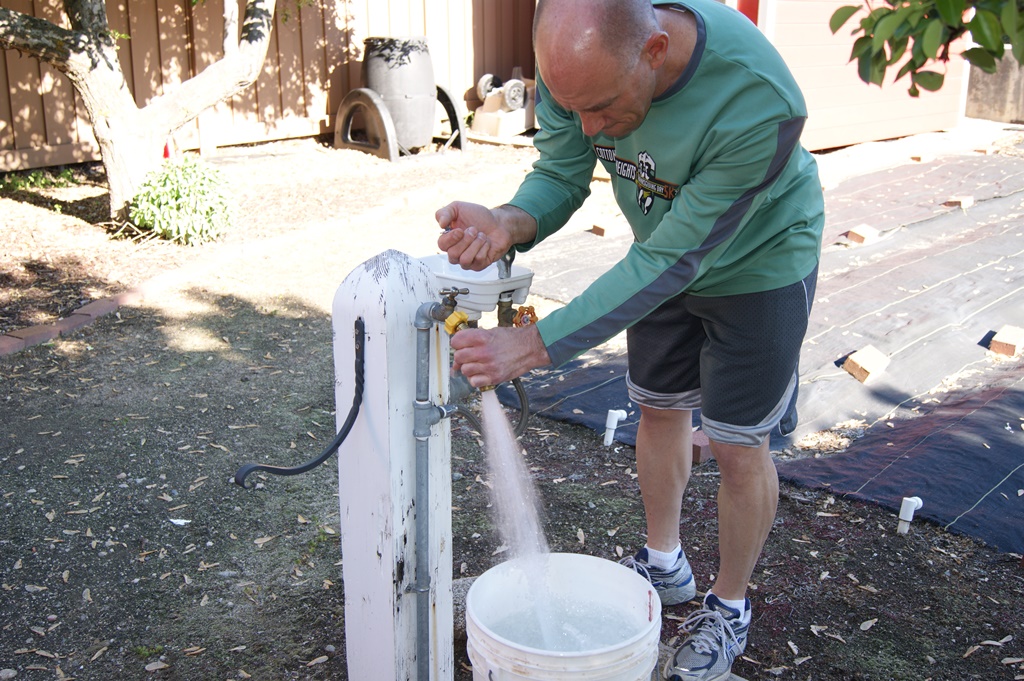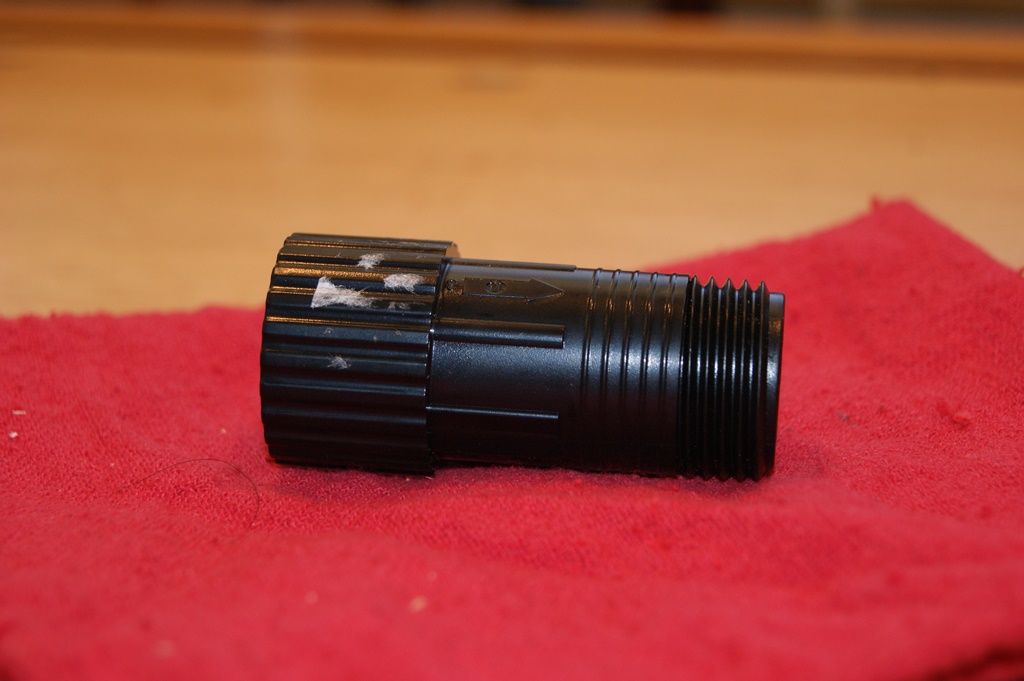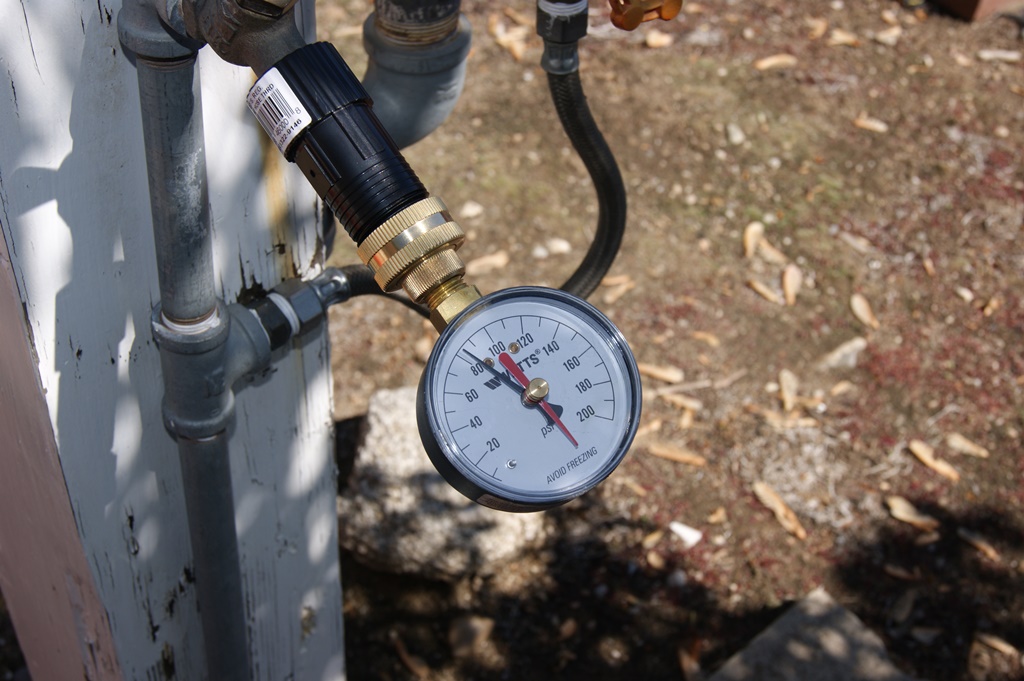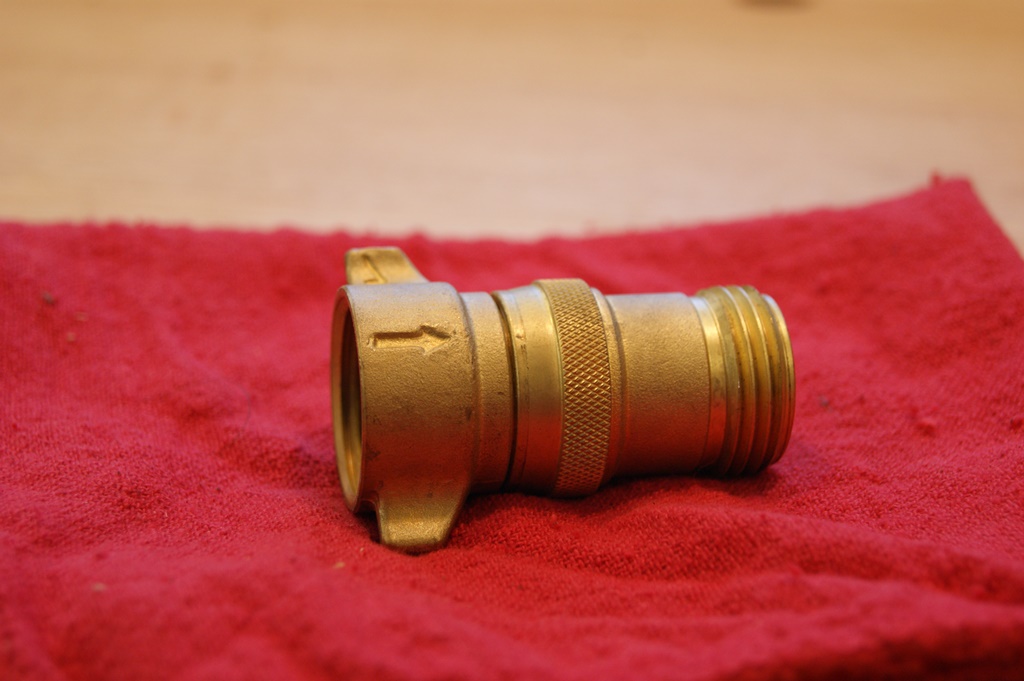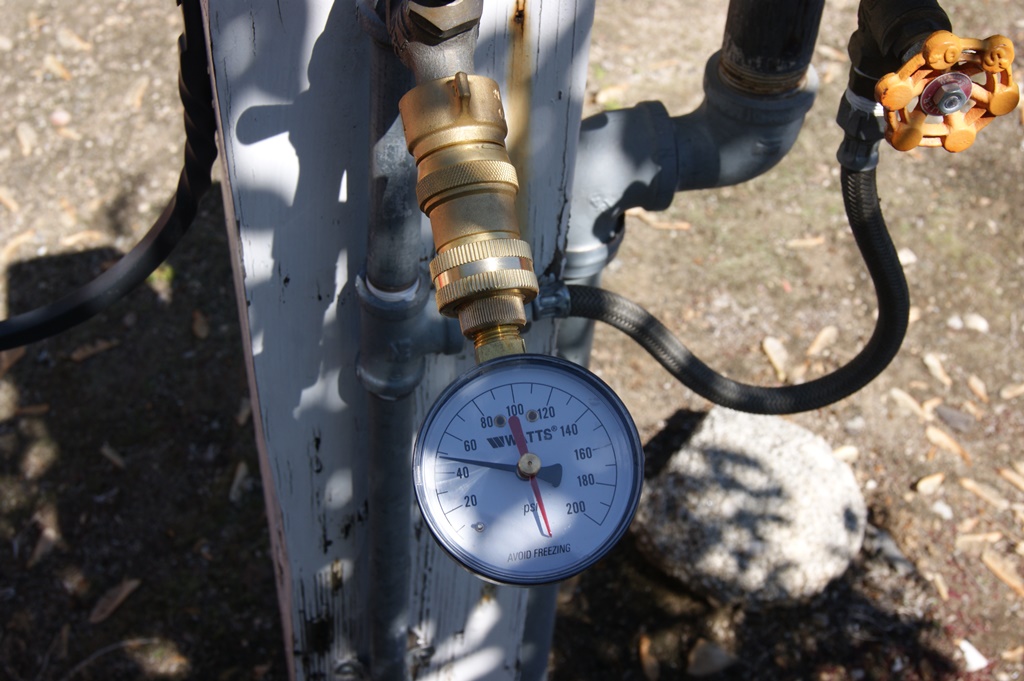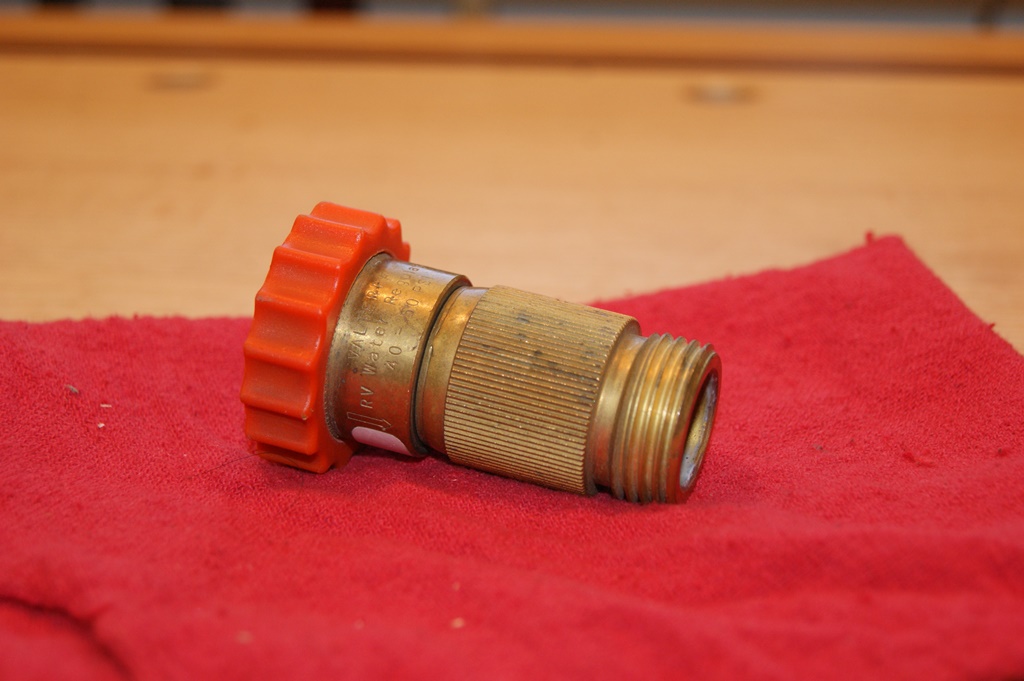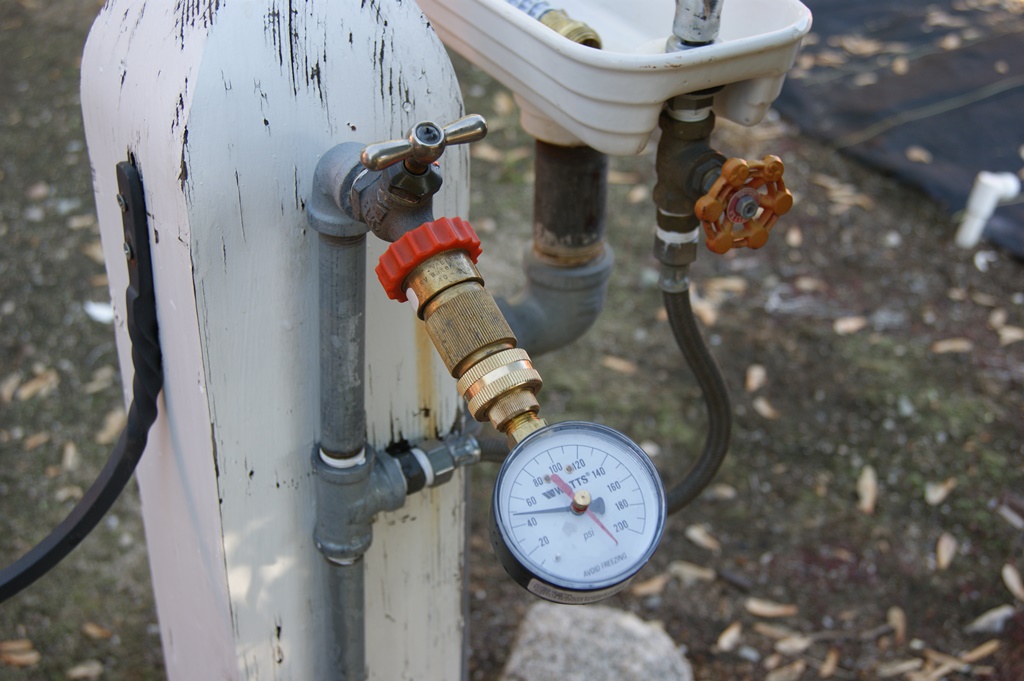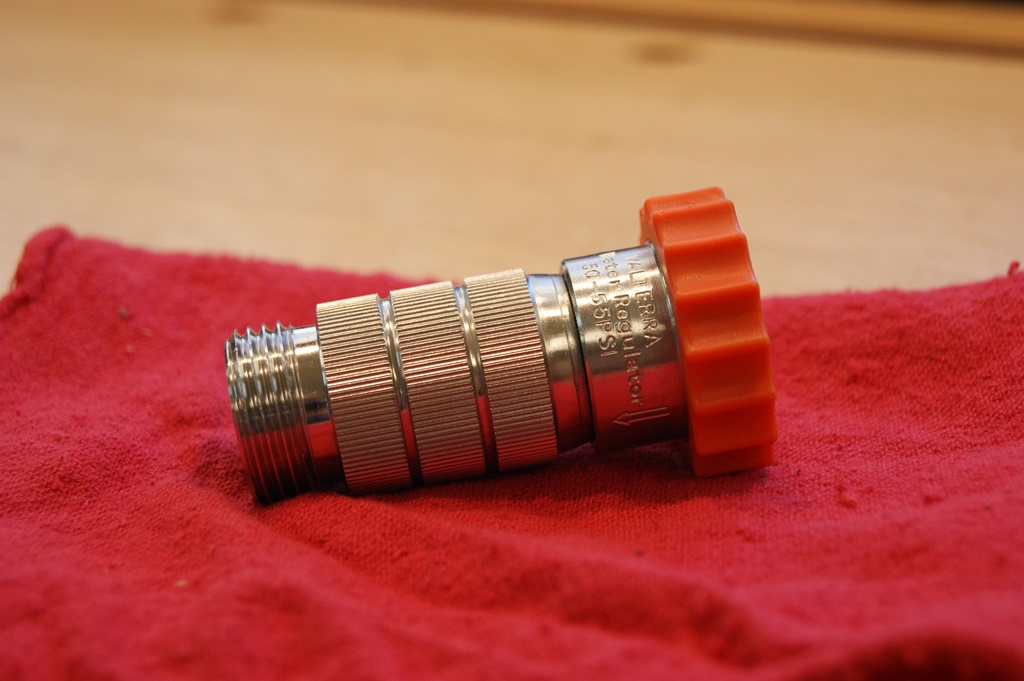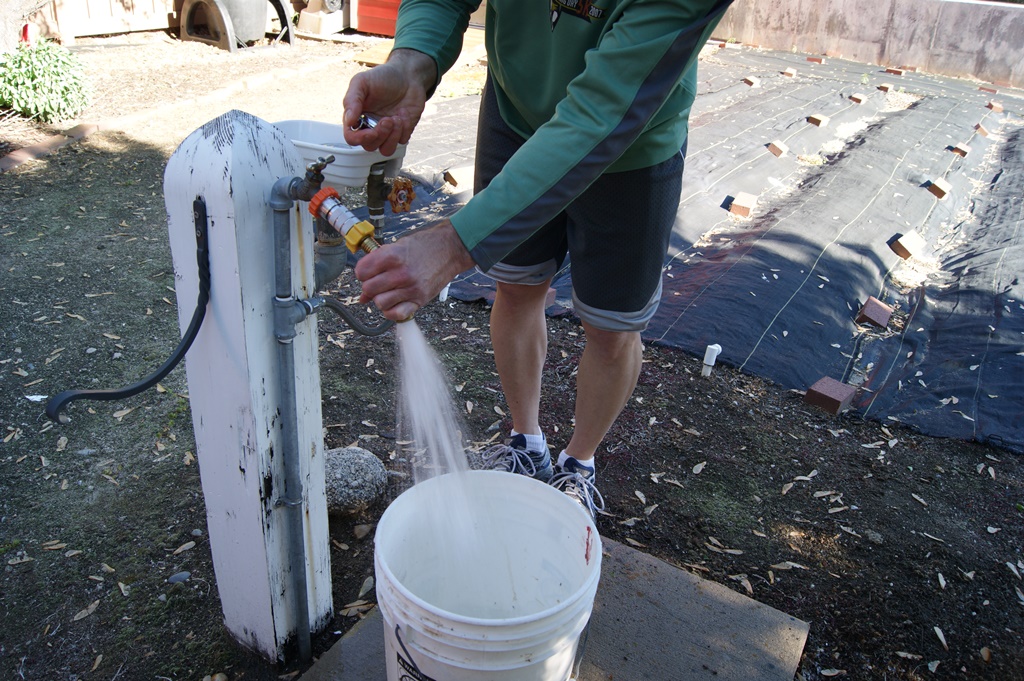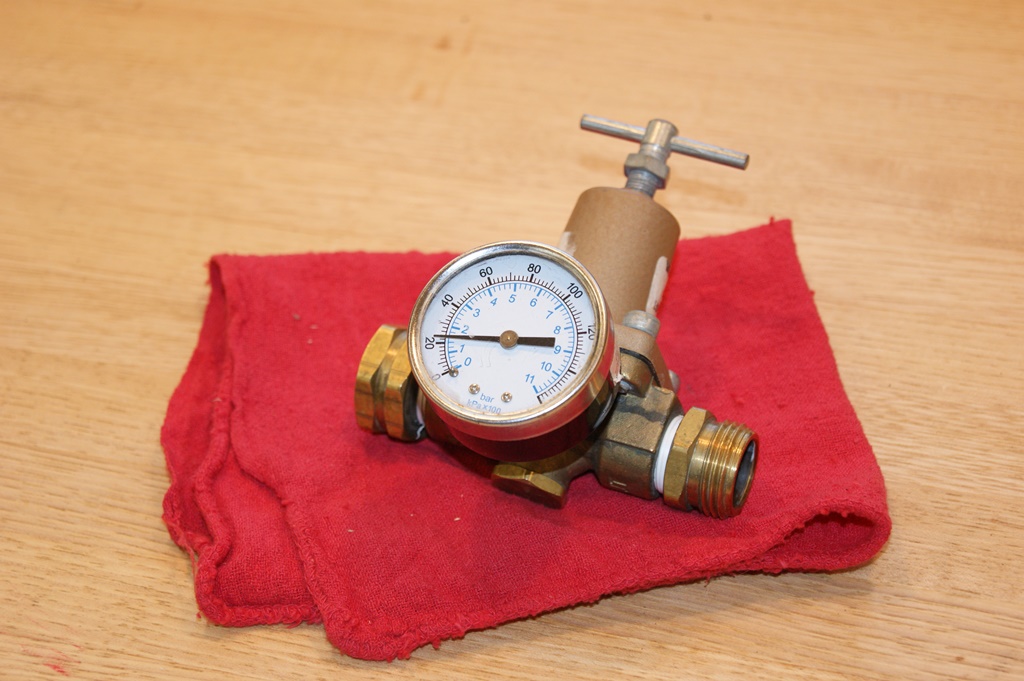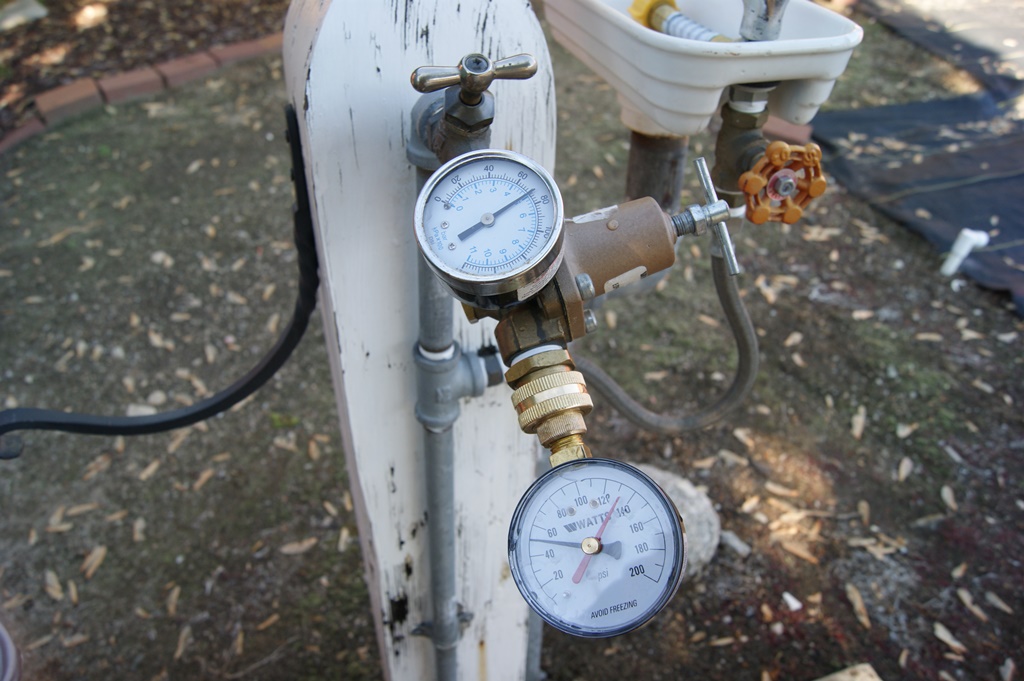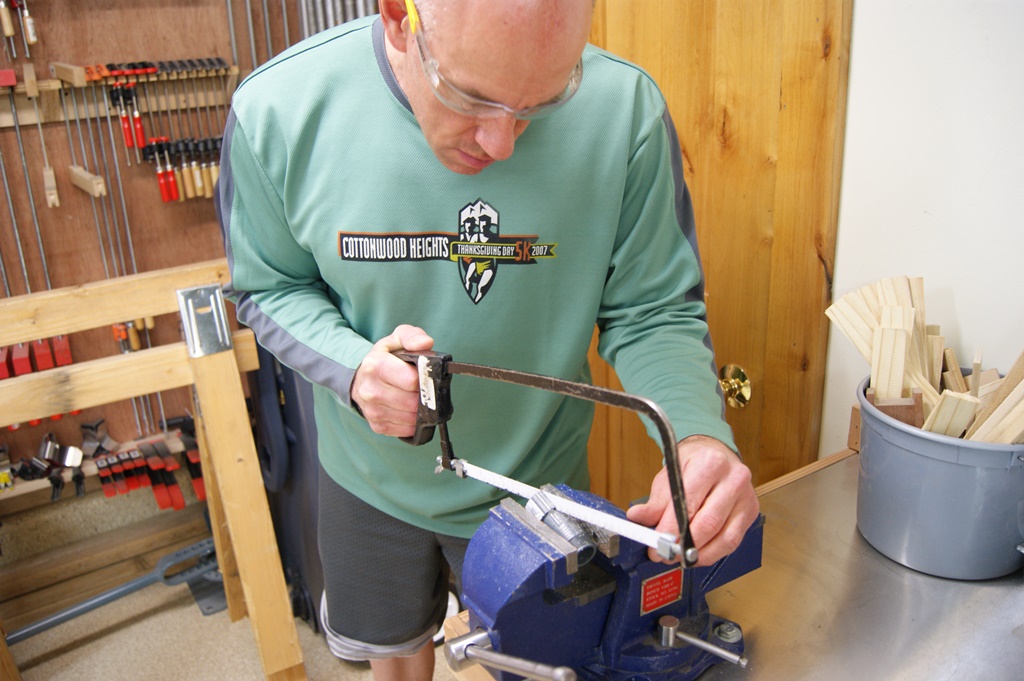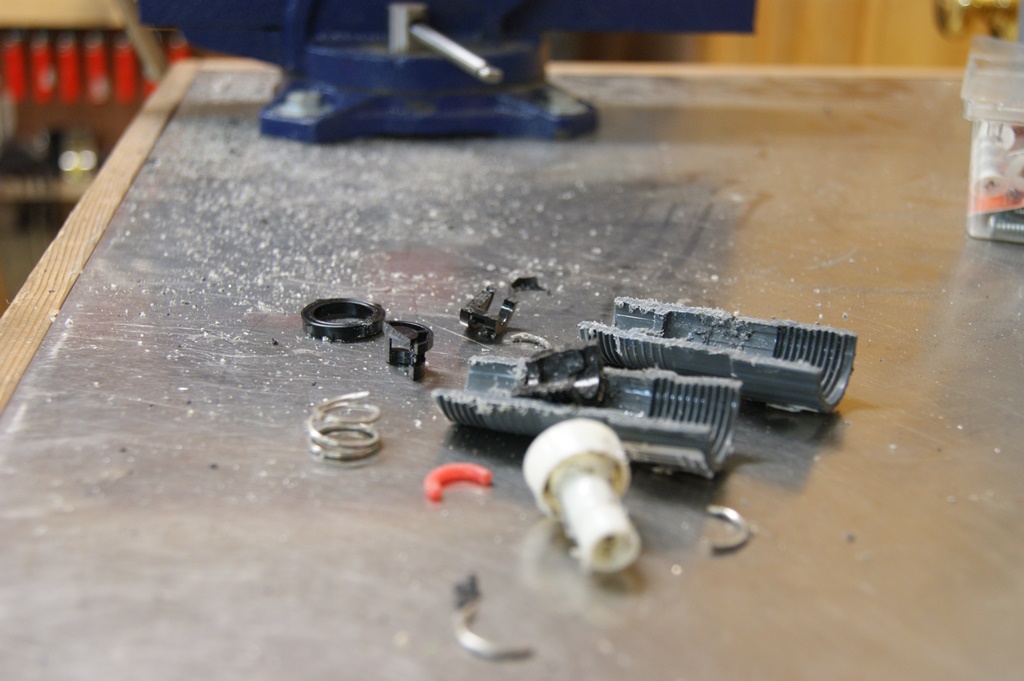
Water Pressure Regulator Round-Up
RV Water Pressure Regulator Round-Up
By: James & Stef Adinaro
One of the great things about traveling in an RV is that you've got a more or less "regular" plumbing system with you, even in some pretty remote and beautiful places. Sometimes, you run that system off your onboard pump and fresh water tank. But if you're staying at a campground that supplies water, you can hook your rig up directly to the campground's water supply.
And while hooking up to a campground water system is pretty convenient, it can also be risky. You see, you don't always know what you're getting. Is the water exceptionally hard? Has it been chlorinated? And what's the pressure of that water? It's this last question that we're concerned with today.
RVs are designed to accommodate water at a certain pressure. If you pressurize your water system beyond what it's designed for, you may wind up with burst pipes, leaky fittings, or compromised appliances in your rig -- and you don't want that. For Winnebago RVs, the recommended pressure and the recommended protection is spelled out in your owner's manual, as in this excerpt:
Water Pressure Regulators for RVs
Because city water pressure varies from location to location, we recommend obtaining an in-line water pressure regulator to prevent damage to any components, connections, and seals in your fresh water system.
These devices simply connect in-line between the supply hose and the city water input on the coach. We recommend regulators that control water pressure to 50 psi. max.
Okay. So we know we need a water pressure regulator, but which one? Many models are available to RVers, are there any differences? I decided to test several available models to find out.
The Test Procedure
There are two things you'll care about when choosing a water pressure regulator: Pressure and Flow Rate. And while pressure that's too high will potentially ruin your RVs plumbing, a flow rate that's too low will leave you with a poor shower experience. It does little good to control the water pressure if you choke off the flow rate to a dribble in the process, so I needed to test both.
Stef and I have a hose bib in the back yard of The Fit RV headquarters that has insanely high water pressure. (It's connected directly to the meter without going through our home's pressure regulator.) With no regulator attached, my Watts Pressure Meter was showing a pressure of 115 psi. THIS is the kind of water supply your RV dealer warned you about! Hooking up directly to this spigot would likely cause problems with your RV's plumbing system. So to pass the test, a regulator would need to bring this pressure down to a usable 50psi or so.
Testing flow rate was also pretty easy. I marked off 5 gallons in a bucket, attached a short length of hose, and timed how long it took to fill the bucket. A little quick math, and we have flow rate in gallons per minute. Unregulated, this spigot filled the 5 gallons in 17.4 seconds, which yields a flow rate of 17.2 gallons per minute. And while it's unlikely you'd ever use close to 17 gallons per minute in your RV, generally when it comes to flow rate, more is better. So the closer a regulator tested to this upper limit of flow, the better.
The Contestants for Best RV Water Pressure Regulator
I wanted to test a variety of pressure regulators. And as I looked through my RV supplies, I had 5 available to test. (I just realized this reveals way too much about my personality...) These regulators ranged from the very cheap to the rather expensive. How did they do? Let's find out!
1: Dig 25 psi Hose Thread Pressure Regulator
I had picked this up from the local home center. It's intended for sprinkler applications, and not RV usage. I wouldn't normally recommend using this for your RV, but included it in the test as a "last resort" option.
Unfortunately, as you can see, this unit was nearly worthless as a pressure regulator. Though it claimed to be pre-set to 25, I found the actual pressure was "regulated" to 82 psi! This is completely unsuitable for RV use. On the plus side, this regulator was the least restrictive of the bunch on the flow. I was able to fill the 5 gallon bucket in only 26.0 seconds, which equates to a flow rate of 11.5 gallons per minute.
2: Camco 40055 Brass Water Pressure Regulator
Available wherever RV accessories are sold, this model is also the best selling pressure regulator on Amazon.com. It claims to reduce the pressure to a safe 40-50 psi. It's also certified as a low-lead fixture.
As you can see in the photo, this regulator performed as advertised. It regulated the pressure down to 47 psi. This would be safe for just about any RV. Going through this regulator, I was able to fill the 5 gallon bucket in 32.6 seconds, which equates to 9.2 gallons per minute.
3: Valterra 40-50 PSI Lead Free Water Regulator
This is another lead-safe brass fixture. This model from Valterra also claims to reduce the pressure to the 40-50 psi range.
And in use, this regulator did indeed reduce the pressure as advertised. The 115 psi was reduced to an RV-safe 47 psi. When I tested the flow rate, this regulator was able to fill the 5 gallon bucket in 32.8 seconds. That equates to a flow rate of 9.1 gallons per minute. That's about 53% of the unregulated flow rate. (9.1 gallons per minute, by the way, is still considerably more than the typical 2 gpm shower head.)
4: Valterra High Flow Stainless Water Regulator
This is the regulator Stef and I currently travel with. It's made of stainless steel, so no worries about lead content. It's supposedly set at a higher psi -- 50-55. This is technically above the recommended 50. I had personally bought into the promise of 10-15% additional flow, so I was curious if it delivered on that.
In testing, the Valterra Stainless Steel regulator delivered on both its promises. The water pressure was regulated to about 52 psi. This is slightly more than Winnebago's recommended 50 psi. When we used this regulator to fill the 5 gallon bucket, it was able to complete the job in 28.8 seconds. This equates to a flow rate of 10.4 gallons per minute, which is about 14% greater than the brass model.
5: Watts Adjustable LF263A Pressure Regulator
This was certainly the most expensive of the regulators I had, and it is also serviceable (these things do wear out, eventually). But did this expense and serviceability justify paying 5 times as much?
I had some difficulties with this regulator. First, the built in meter read about 20 psi greater than our test gauge. I knew that the regulator's gauge was incorrect because it still read 20 psi even while sitting on the bench, so I had to do a little math to even use it.
Next, I found the regulator difficult to adjust. When I initially adjusted it to 50 psi, no water flowed through at all! After a little tweaking, I did successfully get the meter adjusted and flowing at the recommended 50 psi. At that pressure, this regulator only allowed 7.7 gallons per minute of flow. This was noticeably less flow than any of the other regulators.
Conclusions on Best RV Water Pressure Regulator
Well, the first and most obvious conclusion was that you shouldn't use a pressure regulator designed for a drip irrigation system to protect your RV. The Dig 25 psi regulator was such a failure, I decided to destroy it to prevent any temptation to use it in the future. Since it was plastic, I tried to saw it in half to see what was inside.
This was also a failure, as the regulator more or less self-destructed when I cut through it. Don't attempt this at home -- you'll wind up with a jumble of busted parts.
Of the remaining regulators, all three of those marketed for RVs did an adequate job of taming the pressure and providing an adequate flow rate.
The high flow Valterra model did allow a bit more pressure than Winnebago recommends. I leave it to the reader to decide if that's an acceptable risk. For us, it's not an issue because we don't hook up to city water -- we use the regulator only to protect our water filter when using the gravity fill. The Valterra Stainless Steel regulator is also the only one of the properly working regulators that doesn't use brass.
As the cheapest regulator in the test that actually worked properly, it's tough to argue against the Camco 40055 Brass Water Pressure Regulator. I don't know how this will hold up over time, but for the price, it's tough to beat. Let's call it the best value of the bunch.
Finally, the Watts Adjustable Pressure Regulator did eventually work, but unless you like spending 5 times more money than you need to, there is nothing to recommend this regulator over the standard and less expensive RV water pressure regulators. While it is true that this regulator is serviceable (and perhaps mine needed service), the rebuild kit itself costs more than the Camco regulator, and is a significant percentage of the cost of the other two RV regulators. The flow rate through the Watts regulator was also sub-par. You could buy 3 to 5 of the other, better flowing regulators for what you pay for this unit. And those other regulators are smaller, lighter, and easier to store.
Hopefully, this information will help you to pick the right water pressure regulator for your RV. I've summarized the relevant info in the table below. Good luck and we'll see you on the road!
James
Comments
Comments on this post are moderated, so they will not appear instantly. All relevant questions and helpful notes are welcome! If you have a service inquiry or question related to your RV, please reach out to the customer care team directly using the phone numbers or contact form on this page .
